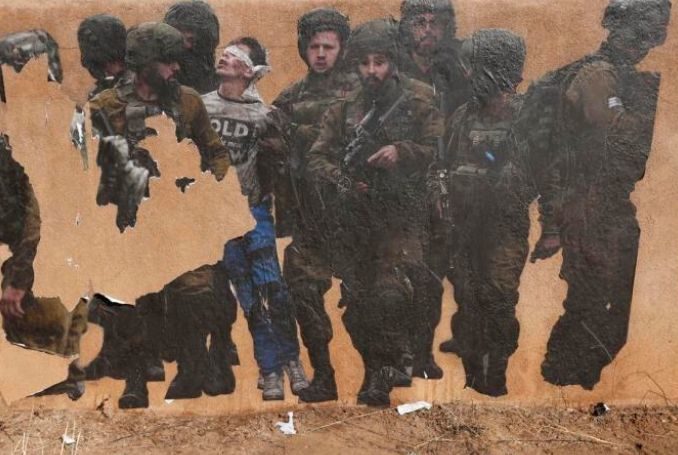
By Benay Blend
In 2014 Santa Feans for Justice in Palestine (SFJP) put up posters on an adobe wall on the corner of Old Pecos Trail and Camino Lejo, a busy intersection that is the gateway to Museum Hill. As Ellie Duke reports, the signs commemorated Palestinian children killed during Operation Protective Edge, a military campaign led by the Israeli Defense Force (IDF) against Gaza.
The posters were torn down, but it began a years-long effort by the group to educate the people of Santa Fe about the plight of Palestinians. After bouts of vandalism, Guthrie Miller, the owner of the wall, applied for a city permit and has since displayed signs which meet the historic district’s criterium.
Now there is a new controversy. On January 4, 2020, a local Navajo artist installed a series of murals on the wall. Remy knew about SFJP’s efforts to install pro-Palestinian imagery, but this work he did on his own.
“I wanted to widen the field of vision for that struggle, rather than relegate it into predetermined spaces. You can imagine where the indigenous analogies play into all of that,” he told Duke. Indeed, it took several years for the Red Nation to abolish Entrada, described by Jennifer Marley as a “racist reenactment of the reconquest” of Pueblo people that up until the summer of 2018 was celebrated each year.
“I lived with a Palestinian family in the US around the time 9/11 happened,” Remy said. “There were a lot of connections we were making in terms of our indigenous struggles.”
The artist likened his own resistance to that of Faris Odeh, the young boy depicted facing a tank. “Even though I’m using everything in my arsenal, I’m up against armor and steel,” he said. “Art should move you to change,” he emphasized.
The location, a leading thoroughfare into the city as well as leading to Museum Hill, also plays a role in Remy’s decision to create a mural in this spot.
In direct opposition to the kind of “fine” art galleries that uphold Santa Fe’s reputation, Remy explains that:
“Street Art never has and never will ask for permission so these particular wheat-paste installations are in direct opposition to these homogenized upper-class institutions and when coupled with local racism, the opposition to this conscious art abounds. It is in public spaces and on the streets of change where tear gas and bullets fill the air that some of the hardest-hitting images of art reside. I understood long ago the task of an artist is to create the images that people get behind, uniting movements for the continuation of our culture and lifeways. Any Indigenous ‘art’ that amounts to nothing more than being a gimmick should be considered traitorous to the time and struggle of our own people especially those on the frontlines. These types of self-serving ‘artists’ have no place within our struggle other than being a conceited capitalistic hurdle against our collective liberation.”
Negative responses soon followed. “Why is Israel singled out as an aggressor when there are many troubled spots in the world?” asked Rabbi Berel Levertov of the Santa Fe Jewish Center-Chabad.
My answer: those “troubled spots” are not persecuting another group of people in my name… and with my country’s tax dollars and diplomatic support.
“There are many facts to the story and to highlight Israel is just anti-semitic propaganda.” Here Rabbi Levertov is following the Zionist trope found on the website Canary Mission, a group that seeks to expose anti-Israel activity on college campuses.
Along the lines of promoting “normalization,” similar to groups like Creativity for Peace, a local dialogue group which brings together young Palestinians and Israeli Jews, Rabbi Levertov wants “a mural with a better depiction of life in the Holy Land.”
Jeffrey Haas, civil rights attorney and member of SFJP replied:
“Pictures of peace do not reflect the reality that Palestinians face as their houses are demolished, their kids are arrested, blindfolded, cuffed, harassed, and imprisoned by the Israeli military, and participants in their March of Return, fenced and locked in the open-air prison in Gaza are killed and maimed by IDF snipers. We do not portray the atrocities against Palestinians because we like them but because we want the US to stop funding and defending them.”
Charging that Remy, a Navajo artist, just does not understand colonialism, Rabbi Levertov concluded that the comparison with Native American struggles in the US is “unfortunate propaganda” and “just not factually correct, because Jews are Indigenous to the land.” What is missing in the Rabbi’s argument is that Palestinians were the majority of indigenous people living in what was called Palestine when the settler/Zionist Movement expelled 700,000 by force and the remainder have lived under an expanding and increasingly harsh Occupation.
The city of Santa Fe has ruled that because papier maché is not in compliance with code provisions that describe walls not art, the murals must come down. In a private email dated January 18, 2020, Jeff Haas said that he believes the reason is “the content, not the medium” of the murals.
Though he notes that many (mostly younger) Jewish people in the States are beginning to question their Zionist upbringing, the murals caused irritation because they “contradict the image of Israel as the constant victim,” which was a theme of Rabbi Levertov’s complaint. Haas’ message is not just to convey the IDF’s crimes, but also our complicity.
In particular, he wants to encourage support of Senator McCullum’s pending H.R. 2407 (“No Way to Treat a Child”) which would end U.S. funding of Palestinian child detention by the Israeli military.
For his part, Remy replied that he was “curious to know who the people are on this board that makes decisions on what is deemed ‘historic’ on Tewa land. … In Santa Fe it seems to be fine to be indigenous but only on the other side of the glass, in terms of the number of institutions that capitalize on our culture.”
Indeed, as Remy notes, there are many reasons to compare the plight of Indigenous people in the U.S. with that of Palestine. “If you compare the dwindling land mass maps to what Indigenous people of this continent and Palestinians had and now have, they are the exact same.” Moreover, there are “racists” not just in other countries but here too, who are trying to erase Indigenous struggles while at the same time they, too, are living on stolen land.
In that regard, he says:
“For all the people who took knives to the images of the Indigenous children on these signs, it is clear these apples did not fall far from the tree in terms of historical westward expansion. So logically one can draw the conclusion that their actions are an extension of their family’s heritage and legacy on this continent.”
Placed within the context of the firing of a Jewish high school history teacher from an elite New York private school based on her support of Palestinian rights, the controversy over the wall in Santa Fe is yet another Zionist assault on education that challenges the official story. This is why it is so important that Miller and SFJP appeal the decision made by the city that would force destruction of such crucial political art.
Along with other critical events, such as the first Palestine Writes Back Literary Festival happening in New York on March 27-29, 2020, Remy’s mural is part of an increasingly visible counter-narrative to the Zionists’ efforts to ensure that theirs is the only legitimate story.
– Benay Blend earned her doctorate in American Studies from the University of New Mexico. Her scholarly works include Douglas Vakoch and Sam Mickey, Eds. (2017), “’Neither Homeland Nor Exile are Words’: ‘Situated Knowledge’ in the Works of Palestinian and Native American Writers”. She contributed this article to The Palestine Chronicle.
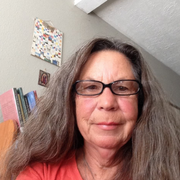
– Benay Blend earned her doctorate in American Studies from the University of New Mexico. Her scholarly works include Douglas Vakoch and Sam Mickey, Eds. (2017), “’Neither Homeland Nor Exile are Words’: ‘Situated Knowledge’ in the Works of Palestinian and Native American Writers”. She contributed this article to The Palestine Chronicle.



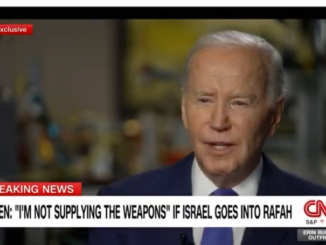
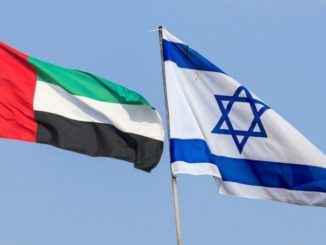
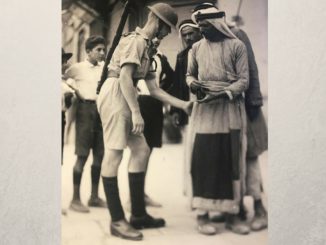



In 2018 Israel passed a “Basic law” declaring that Jews alone are entitled to “self-determination” in that country and another law ordering Palestinan teachers to instruct Palestinian students that they are now and forever second class citizens in the land of their birth. As the great Palestinian poet Mahmoud Darwish has said, Israel pretends to “adjust an undesirable reality with bulldozers.”